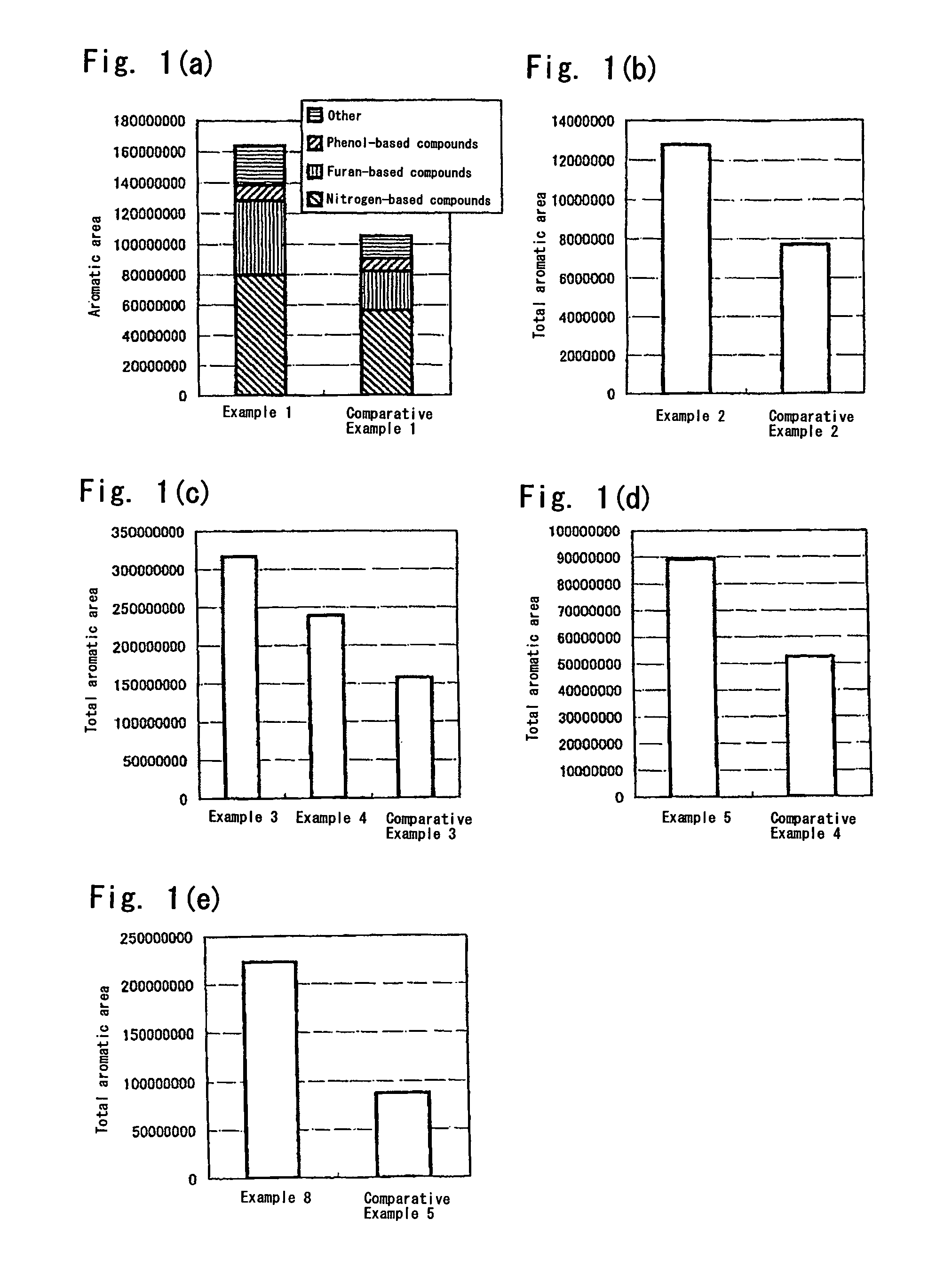Method of extracting volatile component from tasty material, the volatile component and foods and drinks containing the volatile component
a technology of volatile components and tasty materials, which is applied in the field of extracting volatile components from tasty materials, volatile components and foods and drinks containing volatile components, and can solve the problems of inability to recover aromatic components that have already been lost, and the possibility of numerous loss of aromatic components in the extraction process
- Summary
- Abstract
- Description
- Claims
- Application Information
AI Technical Summary
Benefits of technology
Problems solved by technology
Method used
Image
Examples
example 1
[0040]After grinding 3 kg of coffee beans having the L value 21 (arabica coffee beans roasted by far infrared roasting), the roasted coffee beans were charged into a sealable extraction container. Subsequently, the air inside the aforementioned extraction container was replaced with nitrogen gas (normal pressure). Then, super heated steam at about 300° C. was continuously injected into the container from beneath the ground coffee beans inside to allow the super heated steam to contact the ground coffee beans. The aforementioned super heated steam was formed by contacting saturated water vapor generated by a boiler with a metal heating element heated by electromagnetic induction heating at a frequency of 20 kHz, and fed directly into the extraction container. Liquid volatile components were then recovered by collecting the steam flowing out from the top of the aforementioned extraction container and cooling (Brix 1.0). Injection of the aforementioned super heated steam was discontinu...
example 2
[0047]300 g of commercially available green tea leaves (Kabuse-Cha) following tea manufacturing were charged into a sealable extraction container. Subsequently, the air inside the aforementioned extraction container was replaced with nitrogen gas (normal pressure). Then, saturated water vapor at 100° C. was continuously injected into the container from beneath the tea leaves to allow the saturated water vapor to make direct contact with the tea leaves. The steam that flowed out from the top of the aforementioned extraction container was then collected and cooled to recover liquid volatile components (Brix 0.07). Injection of the aforementioned saturated water vapor was discontinued when 300 mL of volatile components were obtained. Next, following extraction of the aforementioned volatile components, the tea leaves were subjected to water extraction using hot water at 60° C. As a result, 9 liters of an aqueous extract of green tea containing 300 mg / 100 mL of tannin were obtained. Fin...
example 3
[0050]After grinding 3 kg of coffee beans having the L value 21, the roasted coffee beans were charged into a sealable extraction container. Subsequently, the air inside the aforementioned extraction container was replaced with nitrogen gas (normal pressure). Then, super heated steam at about 300° C. was continuously injected into the container from beneath the ground coffee beans inside to allow the super heated steam to contact the ground coffee beans. Liquid volatile components were then recovered by collecting the steam flowing out from the top of the aforementioned extraction container and cooling (Brix 1.2). Injection of the aforementioned super heated steam was discontinued when 1 liter of volatile components were obtained. Next, 24 liters of an aqueous coffee extract of Brix 3.3 were obtained by water extraction of the aforementioned ground coffee beans following extraction of volatile components using hot water at 95° C. Finally, the total amounts of the resulting volatile ...
PUM
 Login to View More
Login to View More Abstract
Description
Claims
Application Information
 Login to View More
Login to View More - R&D
- Intellectual Property
- Life Sciences
- Materials
- Tech Scout
- Unparalleled Data Quality
- Higher Quality Content
- 60% Fewer Hallucinations
Browse by: Latest US Patents, China's latest patents, Technical Efficacy Thesaurus, Application Domain, Technology Topic, Popular Technical Reports.
© 2025 PatSnap. All rights reserved.Legal|Privacy policy|Modern Slavery Act Transparency Statement|Sitemap|About US| Contact US: help@patsnap.com

